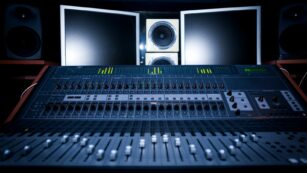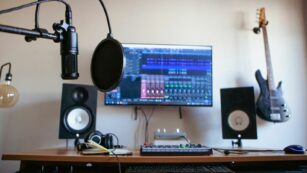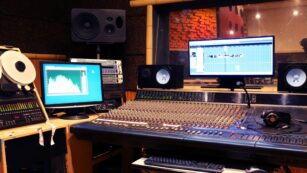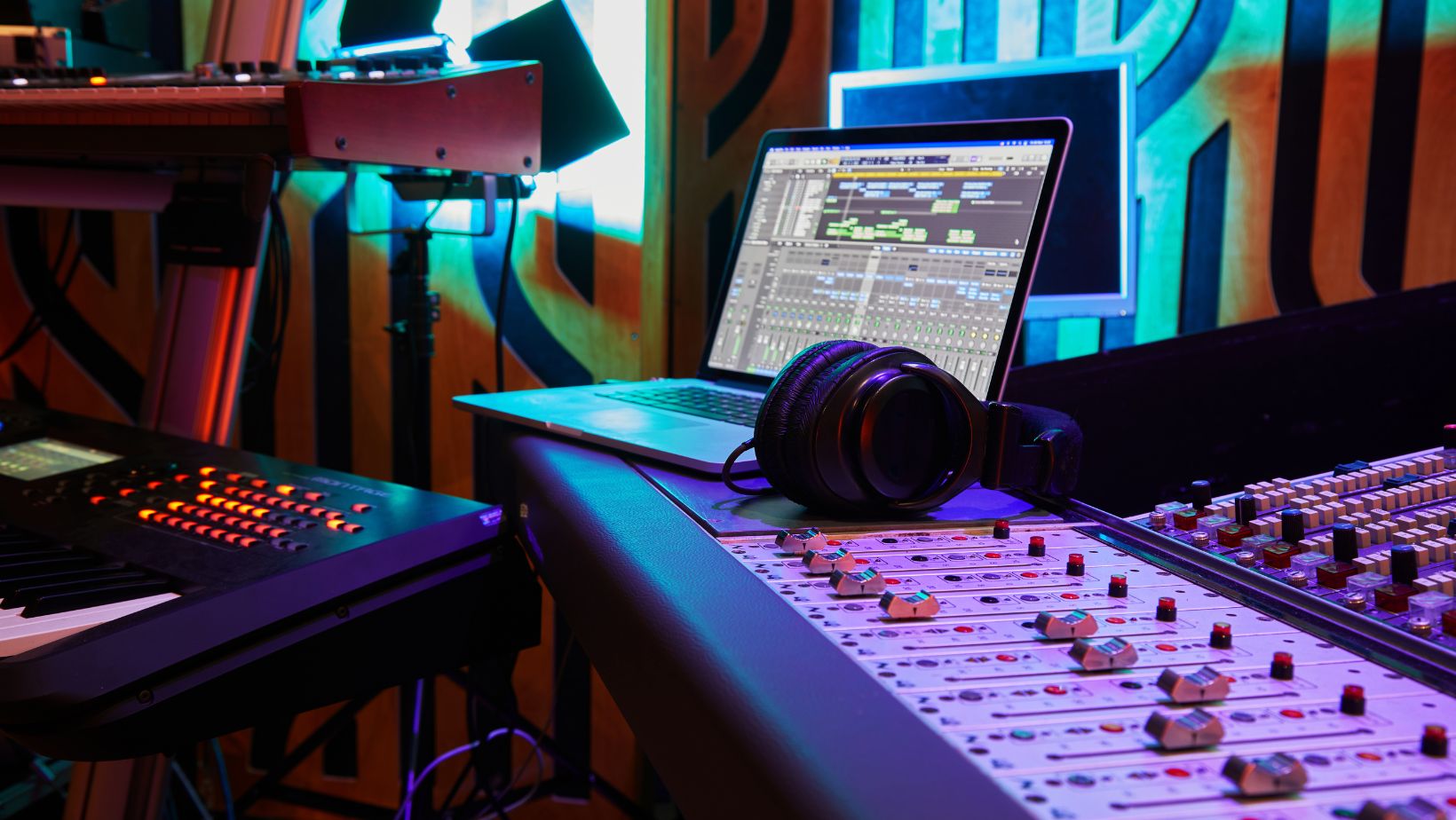GarageBand, Apple’s flagship digital audio workstation, seamlessly turns your Mac into a complete recording studio. It’s a favorite among podcasters, musicians, and audio enthusiasts for its rich collection of instruments, loops, and effects. With its intuitive interface, even beginners can produce professional-sounding music in no time.
GarageBand Mac
GarageBand Mac offers seamless audio creation tools with its user-friendly interface and robust feature set, enhancing the music production experience for macOS users.
Key Features
 GarageBand Mac provides an array of outstanding features to cater to both novice and professional musicians. Key elements include:
GarageBand Mac provides an array of outstanding features to cater to both novice and professional musicians. Key elements include:
- Extensive Sound Library: Offers thousands of loops from various genres, making it easy to start creating music without prior musical knowledge.
- Virtual Instruments: Users can access a wide range of virtual instruments, including pianos, guitars, and orchestral instruments, to add unique sounds to their tracks.
- Drummer Tracks: Easily add professionally played drum rhythms with a simple drag and drop, choosing from various drumming styles and dynamics.
- Audio Recording: Provides the ability to record high-quality audio using a microphone or an electric instrument connected to a Mac.
- Music Lessons: Contains built-in lessons for piano and guitar, ideal for beginners looking to improve their skills.
- Live Loops: Enables users to create music by triggering looped instruments and samples in real-time, providing a DJ-like experience.
System Requirements
GarageBand Mac demands certain system specifications to run efficiently. The requirements are:
- macOS Version: Runs on macOS 10.13.6 or later, ensuring compatibility with newer Mac models.
- Processor: Requires a 64-bit Intel or Apple Silicon processor, optimizing performance and speed.
- RAM: A minimum of 4GB RAM is necessary, with 8GB recommended for optimal operation.
- Storage: At least 1.5GB of disk space for the application, with additional space needed for downloadable content such as loops and instruments.
- Additional Equipment: Some features may require a compatible audio interface and a microphone for recording purposes.
Navigating the Interface
Main Toolbar
 In GarageBox, the main toolbar serves as the nerve center, hosting a range of essential tools and functions. Users find access to project settings, editing tools, and playback controls within this toolbar. Key components include the play, record, and loop buttons, which are prominently placed for quick interaction. The quick help button, an invaluable resource for beginners, offers instant tooltips about the various features of the interface when hovered over with the mouse. Utilities like the metronome and tuner are also available, ensuring that musicians can maintain timing and tune instruments accurately during sessions.
In GarageBox, the main toolbar serves as the nerve center, hosting a range of essential tools and functions. Users find access to project settings, editing tools, and playback controls within this toolbar. Key components include the play, record, and loop buttons, which are prominently placed for quick interaction. The quick help button, an invaluable resource for beginners, offers instant tooltips about the various features of the interface when hovered over with the mouse. Utilities like the metronome and tuner are also available, ensuring that musicians can maintain timing and tune instruments accurately during sessions.
Track Controls
Moving down from the main toolbar, the track controls section allows users to manage individual tracks within a project. Each track comes with its own set of controls, such as mute, solo, and record enable buttons, enabling fine-tuned manipulation of audio and virtual instrument tracks. The volume slider and pan controls also feature prominently, allowing users to adjust the levels and stereo position of each track, which modifies how it fits into the mix. Additionally, the track headers provide easy access to software instruments, audio effects, and automation settings, enhancing the dynamic capabilities of each track.
Creating Music in GarageBand
Creating music in GarageBand on a Mac begins with an intuitive process that involves starting a new project and adding audio tracks. The platform’s efficiency allows musicians of all skill levels to produce soundtracks seamlessly.
Starting a New Project
 Initiating a new project in GarageBand is straightforward. Users select “File” from the main menu, then click on “New.” This action opens a dialog box where the user can choose from various project templates such as ‘Empty Project,’ ‘Songwriter,’ or specific genre-based templates like ‘Electronic’ or ‘Hip Hop.’ Each template comes optimized with pre-set instruments and audio tracks, catering to the specific requirements of the genre or style, thus simplifying the setup phase.
Initiating a new project in GarageBand is straightforward. Users select “File” from the main menu, then click on “New.” This action opens a dialog box where the user can choose from various project templates such as ‘Empty Project,’ ‘Songwriter,’ or specific genre-based templates like ‘Electronic’ or ‘Hip Hop.’ Each template comes optimized with pre-set instruments and audio tracks, catering to the specific requirements of the genre or style, thus simplifying the setup phase.
Adding and Editing Audio Tracks
Once the project template is set, users can begin adding audio tracks by clicking the “Add Track” icon. GarageBand offers a variety of track types, including audio recordings, software instruments, drummer tracks, and external MIDI files, each enhancing the musical composition. Adding a track involves a simple drag and drop of loops from the loop browser or recording new segments directly through a connected microphone or musical instrument.
